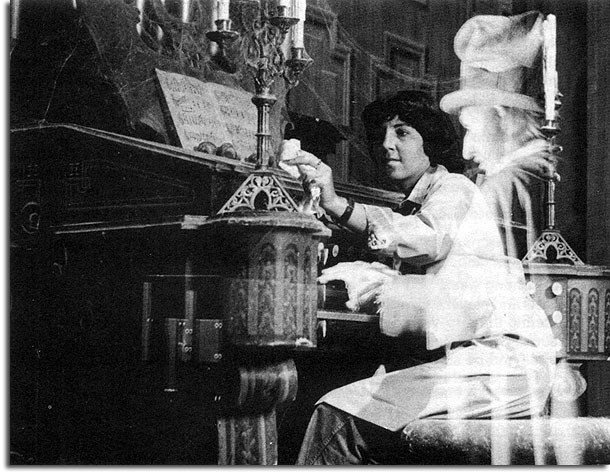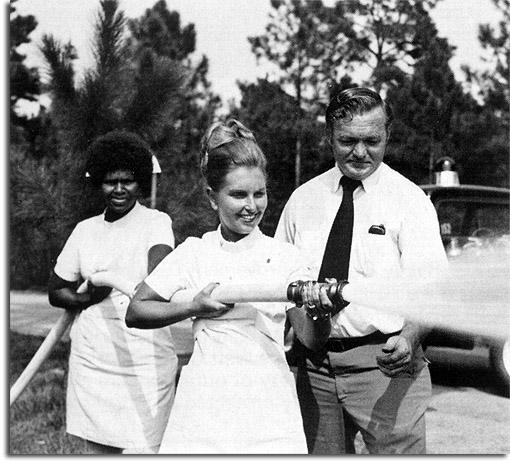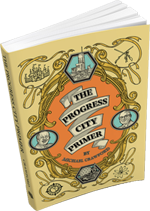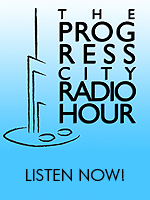Contribute to Our Research |
By Michael - October 31st, 2011  "House cleaning, Halloween style... Sitting in the lap of one of our 999 happy haunts is Jayne Polgar, one of our animation artists who finds that every day is Halloween around here! Jayne spends her time keeping up the appearances of dozens of ghouls and goblins in the Haunted Mansion." - Eyes and Ears of Walt Disney World, 28 October, 1977 The mention of Disney and Halloween almost instantly evokes a few images. Ichabod Crane, for one. For those of us of a certain age, Disney’s Halloween Treat (Which ABC, Disney Channel, and ABC Family should all be mortally embarrassed for ignoring). But mostly, it’s all about the Haunted Mansion.
From Halloween of 1977 comes this tale of the people that keep the Mansion spooky. And not a single squirty crypt required!
“MANSION” GREAT HAUNT FOR GHOST LOVERS
Ghostly white hands push upwards, raising the coffin lid ever so slightly. It creaks and groans, rising slowly to expose rusty spikes and bony fingers.
But there’s something definitely amiss … Jayne Polgar moves in to solve the case.
No! It’s not the ghostly movements that worry her. It’s the french cuffs on the skeletal wrists lifting the coffin lid. They’re slipping. And it’s Jayne’s job to straighten them out along with other ghostly shapes throughout our Haunted Mansion attraction.
Jayne’s specialty is make-up and grooming for 999 happy haunts who provide wall-to-wall running chills for millions of guests in the Magic Kingdom each year … because even a ghost must keep up appearances!
Jayne is one of four artists who spend their days … and more than a few nights … making ghosts appear frighteningly unlife-like. She joined the Audio-Animatronics Department staff several years ago while studying art at a local college. She claims she loves her work, though standing in the middle of a graveyard full of ghosts can be a little unnerving … even for a veteran!
Jayne’s job entails regular maintenance on the appearance of dozens of ghouls and goblins, spooks and spirits. In the early morning hours before the Mansion “comes to life,” Jayne and her three colleagues walk through the haunted hallways, looking for any outward signs of wear and tear from the continuous movement of the audio-animatronic figures. They adjust a hat on a graveyard picknicker, straighten a collar here, adjust a sleeve and check the ghostly white pallor of a graveyard caretaker there.
Working out of a trailer behind Fantasyland that is literally loaded with the special tools of their trade, the Animation Art Department also includes artists Lee Nesler, Tom Rodowsky and Randy Ogren.
“We take care of every attraction in the Park,” Lee explained. “We’re concerned with the overall show aesthetics and maintenance of all of them … but I guess Haunted Mansion is our favorite!”
Despite their familiarity with the Mansion and its ghostly inhabitants, the early morning visits sometimes hold surprises of near hair-raising proportions.
“As well as I know the effects, if I’m concentrating on a touch-up job and an animated figure is suddenly activated, I still jump!” Jayne told us.
The tools of her trade include translucent face powder, eye shadow, vanishing cream, and an extra supply of witch hazel … but no dust broom. All of the ghosts prefer a nice layer of dust over her handy work.
Lee, Tom and Randy have other specialities. You might find one making spider webs and sprinkling out dust, another doubling as a seamstress who specializes in disappearing thread, while the other works with the sound system … and his work is always a howling success!
If you’re a history buff, then working in the Hall of Presidents would be great. And if you collect dolls, It’s A Small World would be just the thing. But all four agree, there’s something about the Haunted Mansion that just “grows” on you! The last we heard, they were flipping a coin to see who would open the attraction Halloween Day … with the loser getting the honors!
Related Posts...
By Michael - October 31st, 2011 
Despite the fact that the Lake Buena Vista area is a critical element of the early Vacation Kingdom aesthetic, it often seems that Disney itself had a poor handle on what, exactly, the development was and why it existed. Trying to track the history of the Lake Buena Vista village’s intended purpose is a dodgy endeavor; seemingly every year in the early 1970s presented a new concept for the area. Was it a development for employees? For guests? For corporations? Was it a predecessor to EPCOT? Or merely overflow capacity for the Walt Disney World resort hotels?
At one point or another it seems to have been all these things. The idea of a “second city” in Walt Disney World went back to Walt’s original press conference announcing the Florida development. At the time he said he was considering building a “city of tomorrow” (which would become EPCOT) and a “city of yesterday.” As the EPCOT concept developed prior to his death, this other city seems to have evolved into a “satellite community” which is poorly elaborated but nevertheless always present in descriptions of the futuristic city. At times it seems the satellite community was intended for Disney retirees; EPCOT was only intended for working employees, and cast members would not have been able to live there in perpetuity.
As site planning for Walt Disney World continued, the satellite community came to be planned for the Lake Buena Vista area. As construction began on property, plans for the Lake Buena Vista community became more recreation and resort-oriented. Instead of full-time residences, which would require schools and other civic facilities, these would be second homes, available for sale or lease to corporations, those in search of a vacation home, or Disney clients.
The spin at the time was that the development, although not a permanent residential community, was laying the groundwork for EPCOT. Disney had no experience in the field of real estate development, and Lake Buena Vista would be their dry-run at city building. The small-scale, park-like atmosphere would allow a more gradual entry into home construction than the work required for the futuristic city of EPCOT.
It would also provide a place to put corporations that Disney was courting for sponsorships; the EPCOT effort (in both city and theme park form) depended entirely on the ability to recruit private participation and funds, and the Villas that were to be built in Lake Buena Vista would be a perq for visiting executives. They were also typically advertised as being available for “employee reward programs” or the like, the idea being that companies who bought townhomes in Lake Buena Vista could use them to reward hardworking underlings.
So Disney formed their own development subsidiary – the Buena Vista Land Company – and began building townhouses. Now they just had to sell them.

As with most things in early Walt Disney World, this is where it gets fun. Disney knew how to sell an idea back in those days, in verbiage so lush and savory you just want to bite down on it and chew. No guilt trips about buying your kids all the magic, dreams, and fantasy they can stand here. No pirates and princesses, no dependence on the memories of past glories. Back in 1972, Disney could take the sale of condominiums and turn it into an existential odyssey; a veritable dream quest into the heart of some fabled Shangri-La called Central Florida. This is how you do it, kids:
Continue reading Lake Buena Vista Chronicles: Selling The Magic, 1972
Related Posts...
By Michael - October 30th, 2011 One of Disney’s great, iconoclastic artists was Eyvind Earle, a master painter responsible for bringing a stylized flair to midcentury Disney animation. Earle was heavily involved in the unique backgrounds and production design of Sleeping Beauty. I would elaborate on his biography, but thankfully we are able to see his life through his own words.
Continue reading Eyvind Earle, A Biography
Related Posts...
By Michael - October 29th, 2011 Walt Disney World was awesome.
OK, maybe “hilarious” is the word. Whatever the case, cast publications in the early years included pictures like this:
 "Don Poole instructs Sylvia Tait (right) and Willie Willis on how to use a fire hose at Orange Vista Hospital." Walt Disney Productions was pretty excited that they suddenly had their own World. All these new services and divisions – they were running a real live city. They even had a fire department – the Reedy Creek Improvement District Fire Department had grown in five years from seven men and one antique fire truck at its inception in 1968 to seventy-one firefighters and officers as well as “two 1250-gallon per minute pumps, 2 wood trucks, one 1250-gallon tanker, one rescue vehicle, three ambulances, two station wagons for transporting sick or injured guests and employees, two vehicles for investigations and inspections and three emergency service vehicles.”
To illustrate this fact, the above picture was published in the October 13, 1973 edition of Eyes and Ears of Walt Disney World. That’s the fire chief Don Poole on the right. And now you know.
Related Posts...
By Michael - October 29th, 2011 Funny story…
So last week I headed over to the Academy of Motion Picture Arts and Sciences for a neat 100th birthday tribute to artist Mary Blair. It was a fun show, hosted by the always-delightful Alice Davis, and featured a panel of artists who discussed Blair’s work.
A rather surprising fact-drop occurred when moderator Charles Solomon introduced panelist Mike Giaimo as “art director of the upcoming Snow Queen.”
So… we’re on again with that?
Continue reading Surprise Snowstorm
Related Posts...
|
The Progress City Primer
 From the Progress City archives comes this collection of 33 tall tales and true from Disney history. Available in paperback, hardback, and ebook formats. |













Recent Comments